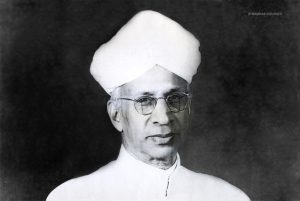 Teaching is a fine art if the teacher himself/herself is lively and engaging. In Dr. Sarvepalli Radhakrishnan’s words, Our educational institutions are devoid of all cheers and joy. Whatever a teacher does must be with a song in his heart to rejoice in the noble mission of teaching. In honour of his birth anniversary, Teacher’s Day is annually celebrated on September 5.
Teaching is a fine art if the teacher himself/herself is lively and engaging. In Dr. Sarvepalli Radhakrishnan’s words, Our educational institutions are devoid of all cheers and joy. Whatever a teacher does must be with a song in his heart to rejoice in the noble mission of teaching. In honour of his birth anniversary, Teacher’s Day is annually celebrated on September 5.
Bearing his words in mind, the question beckons, why are our educational institutions devoid of cheer and joy? Who is responsible for this deficiency? Is it not the teachers who are the main architects of the schools, also ought to create a joyous and lively atmosphere in the classroom to make the students equally mirthful?
 Teaching is a fine art, if the teacher is a fine artisan. Teaching is often mistaken to be a strict, disciplinarian act of inculcating knowledge by inducing fear. Teaching cannot be imposed on a child, but rather a child should feel the urge of learning with joy and curiosity; and that joy and curiosity should be created by the skills of the teacher.
Teaching is a fine art, if the teacher is a fine artisan. Teaching is often mistaken to be a strict, disciplinarian act of inculcating knowledge by inducing fear. Teaching cannot be imposed on a child, but rather a child should feel the urge of learning with joy and curiosity; and that joy and curiosity should be created by the skills of the teacher.
As I was passionate about teaching, I left my Central Government service from the Accountant General Office, Shillong to pursue my passion. When I appeared before the Board of the Assam Public Service Commission for a viva (interview), I felt nervous to see a huge number of candidates there who were more-more qualified and better looking than me! All competing for one vacant position!
Moving past that, I was called by the Board and appeared hesitantly. I could answer the academic questions at ease, and then some dignified members asked me what tool would I use to control the unruly, delinquent students in the classroom. I replied instantly that I would not punish, rather I would divert their minds towards interesting stories with underlying lessons.
The Board was definitely pleased (as I assume) because I got the appointment.
During my thirty three years of service in the field of teaching, I gathered some interesting facts and experiences of my students to understand them better and apply my own technique to attune their focus towards the lessons taught in my classes.
From my observation, a classroom full of students is a mixed bunch – some gentle and attentive in the class, others distracted, bored, restless and sometimes even drowsy. What is the cause? In such cases, the onus always lies on the teacher and their skills.
The subject was English Literature in the seventh standard, where students were unable to correctly spell words such as ‘Attendance’ ‘Heinous’, ‘Assassination’ and ‘Mathematics’. I failed to teach them these through memorisation. Therefore, during the spelling test, their performance was miserable and I was answerable to the Principal. I was worried!
After much thought, I applied my creativity and asked the students, “Do you know how to spell the word dance?” An enthusiastic bunch responded by cheering yes!
Then I asked them to write, ‘At-ten-dance’. They wrote correctly, and then I asked them to join the words together. ‘Attendance’! ‘O’! It is ‘Attendance’! Each and every student enjoyed the new process. Similarly, I taught them, ‘Hei-no-us’ = Heinous, and ‘Ass-ass-I-nation’ = ‘Assassination’ ‘Mat-he-mat-ics’ = Mathematics .
From that day onwards, the students of that class were attentive and enthused; which was a rewarding experience for me, as a teacher.
In the higher classes I had also observed the unwillingness of writing essays and biographies. I tried to divert them with short questions on the subject such as – Who was Rabindranath Tagore? When was he born? Name of few books he composed. What is aNobel Prize ? In which year did Tagore win the Nobel Prize? For which book? In which year did he die?
With these questions as guidelines, it could be turned into descriptive paragraphs wherein even the weakest student could score average marks. This is the hallmark of success for a teacher, I believe.
Other than the methods already devised, dramatising lessons, especially in English Literature would often go a long way in grabbing the attention of students as well as for memorising. For instance, while teaching the chapter on ‘Alexander and Porous’, assigning the roles of Alexander and Porous to two students with the task of reading out dialogues as given in the text; proved interestingly captivating by observing and hearing the dialogues.
Looking back at my years as a teacher, my greatest achievement was having been able to teach students about ways of life from books and elsewhere without any physical punishment but with good counselling, humour and other creative techniques. These are unforgettable memories that I gathered in my lifetime.
*****
(The author is a Retired Principal of Govt. Girls’ Higher Secondary School Shillong)



